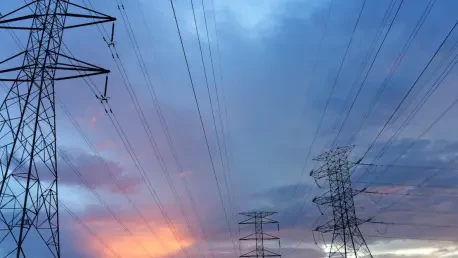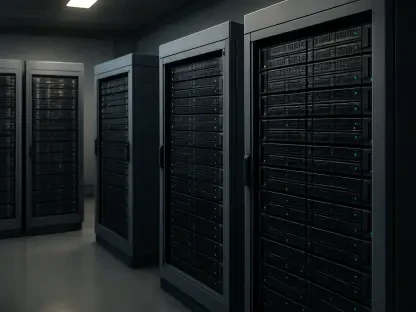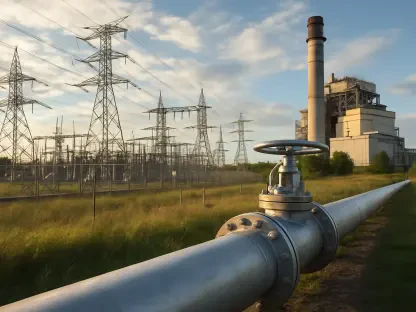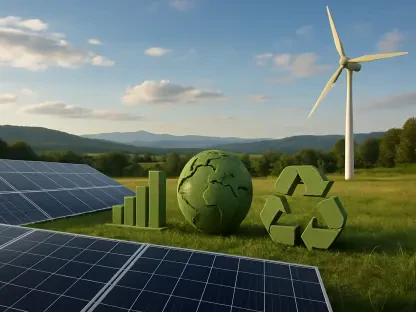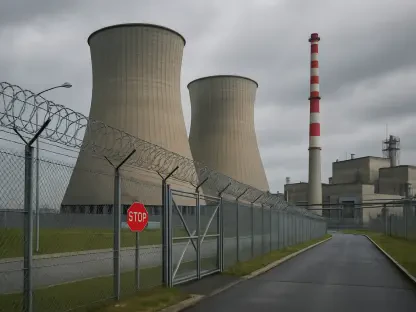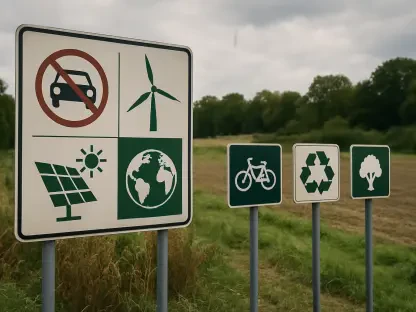The Biden administration’s recent initiative to fast-track a series of electric transmission corridors using a legal authority from 2005 aims to enhance the nation’s power grid and promote clean energy. While these ambitious projects hold the promise of improved grid reliability and increased integration of renewable sources, they also face significant opposition and confusion at the local level. Farmers, ranchers, and certain members of Congress have raised concerns, questioning the potential impacts on their communities and the processes behind these initiatives.
Federal Push for Enhanced Grid Reliability
Biden Administration’s Fast-Track Initiative
The Department of Energy (DOE) has placed a strong emphasis on the prioritized transmission corridors as essential avenues to strengthening grid reliability, relieving congestion, and preparing for future demand increases. Furthermore, the integration of clean energy is a central goal, aligning with the nation’s broader environmental objectives. However, some critics have expressed significant reservations. They argue that the aggressive timeline and approach of these projects suggest a potential overreach by federal authorities, with the risk of eminent domain being a major concern.
Opponents worry that the federal government might utilize eminent domain to expropriate private properties to pave the way for these transmission corridors, thereby infringing on property rights. The balance between the pressing need for upgraded infrastructure and the protection of individual property rights creates a contentious debate. The DOE’s assurances of the critical nature of these corridors for national interest often clash with the fears of local communities about the potential loss of their lands and livelihoods.
Southwestern Grid Connector Corridor
A prime example of these tensions can be seen in the opposition to the Southwestern Grid Connector Corridor, which is planned to run from southeastern Colorado to eastern New Mexico. This corridor has sparked considerable resistance among local farmers and ranchers. They argue that they received insufficient notice about the project and had inadequate opportunities to voice their concerns during the public comment period. This perceived lack of transparency has fueled anger and suspicion, as many feel sidelined in decisions that could drastically affect their lives.
Representative Lauren Boebert of Colorado has been vocally critical of this project, urging Energy Secretary Chris Wright to halt it. Boebert has pointed out that landowners in affected Colorado counties like Baca, Prowers, and Kiowa were not adequately informed and therefore could not engage meaningfully in the comment process. This situation has become a rallying point for those who believe rural communities are bearing the brunt of what they call “inefficient green energy projects” driven by federal mandates.
Local and Regional Concerns
Community Engagement Issues
In New Mexico, Representative Teresa Leger Fernandez has highlighted significant flaws in the DOE’s community engagement process. According to her, many misunderstandings exist about the implications of corridor designations. Importantly, establishing a corridor does not mean automatic approval for specific transmission projects or the acquisition of properties. Each proposed project must still undergo review and obtain permits from state agencies, ensuring that local input and regulations are considered.
Despite these clarifications, many local residents remain skeptical. The confusion surrounding the corridor proposals indicates a need for clearer communication from the federal authorities. There is a palpable fear that without proper engagement, these projects might proceed without due regard for the interests and rights of the affected communities. Transparent processes and comprehensive consultations are essential to building trust and addressing the concerns of those impacted by these infrastructure developments.
Extended Comment Periods
In response to the numerous concerns raised, the DOE has taken steps to extend the public comment periods and organize more community briefings. These efforts aim to provide more opportunities for affected individuals to voice their opinions and for their questions to be answered thoroughly. However, despite these initiatives, opponents remain cautious. The specter of eminent domain looms large, fueling fears that the federal government could eventually resort to seizing private land to construct power lines.
The extension of the comment period is seen as a step in the right direction, but skepticism persists. Landowners worry that these measures may be insufficient to safeguard their interests in the long term. The corridor designation itself does not transfer land ownership to the federal government but does empower the Federal Energy Regulatory Commission (FERC) to grant permits if state authorities are unable to approve a power line application for the designated area. This provision continues to stoke fears of potential federal land grabs.
Federal vs. State Control
Tribal Energy Access Corridor
The proposed Tribal Energy Access Corridor, which spans from North Dakota through South Dakota to Nebraska, has encountered a mixed reception. In South Dakota, particularly, there is considerable skepticism about the necessity and merits of this project. Critics question whether designating this corridor as a National Interest Electricity Transmission Corridor is truly essential for enhancing electric reliability and reducing costs. The South Dakota Farm Bureau, for instance, has voiced its apprehension regarding federal overreach and emphasized a preference for state-level control over such projects.
The debate over federal versus state control is critical in this context. Many argue that closer oversight by state authorities would better address the unique concerns of local communities and ensure that their specific needs are met. The apprehension about federal control also reflects broader sentiments about the balance of power between federal and state governments, particularly when it comes to significant infrastructure projects that alter the landscape and impact local economies.
Complex Grid Operations
In addition to jurisdictional issues, the complexities associated with differing grid operators’ boundaries, tariffs, and market rules further complicate the transmission projects. These “seams issues” create disparities in power prices and access across adjacent control areas. Enhanced transmission capabilities could mitigate these issues, allowing for more seamless power flow and addressing mismatches between supply and demand in various regions.
For instance, power sources range from hydroelectric power in Manitoba to coal-fired generation in central states, with recent contributions largely coming from wind and solar energy. These diverse sources reflect the evolving energy landscape, where the integration of renewable energy into the grid poses both opportunities and challenges. Streamlined transmission corridors could facilitate the flow of electricity across different regions, ensuring that renewable energy generated in one area can be utilized where it is most needed.
Evaluating the Path Forward
Reduced Number of Corridors
In light of the challenges and opposition encountered, the DOE initially considered ten corridors but has since reduced the number to three by December 2024. One of these remaining corridors runs along the picturesque Lake Erie, stretching from Pennsylvania into Canada. As these projects advance, the DOE remains committed to examining the proposed routes thoroughly, fulfilling obligations under the National Environmental Policy Act (NEPA), and soliciting public comments to inform the development of an environmental impact statement (EIS).
These steps are crucial in ensuring that the projects proceed with due caution and consideration for environmental and community impacts. Public input is sought to guide the scope of the EIS, which will assess the potential consequences of the proposed corridors. This process aims to strike a balance between the urgent need for infrastructure improvements and the protection of local interests.
Balancing Interests
The Biden administration’s recent push to accelerate the development of electric transmission corridors, using legal authority granted in 2005, aims to strengthen the nation’s power grid and advance clean energy initiatives. These extensive projects promise to enhance grid reliability and facilitate the integration of renewable energy sources, contributing to a more sustainable future. However, they face considerable opposition and confusion at the local level. Farmers, ranchers, and some members of Congress have expressed serious concerns about the potential impacts on their communities and the processes behind these initiatives. The opposition centers on worries about land use, property values, and the transparency of the decision-making process. Local stakeholders fear that their needs and perspectives might be overlooked in the rush to modernize the grid. Additionally, there is confusion about how these projects will be implemented and who will bear the costs. This situation underscores the complex balance between national energy goals and local interests and rights.
